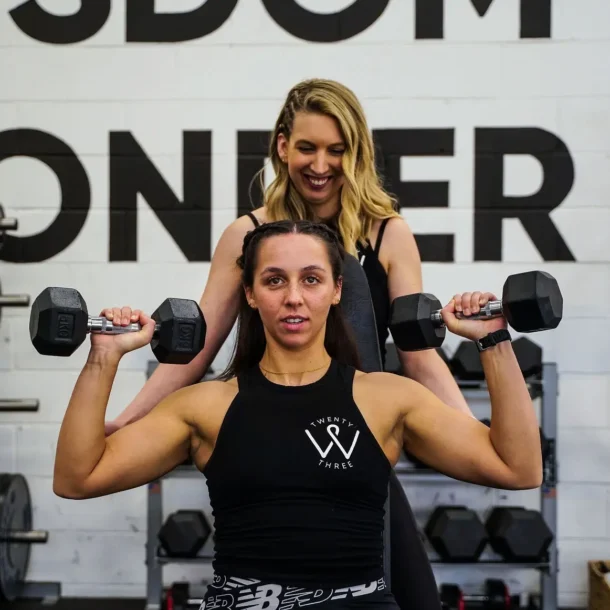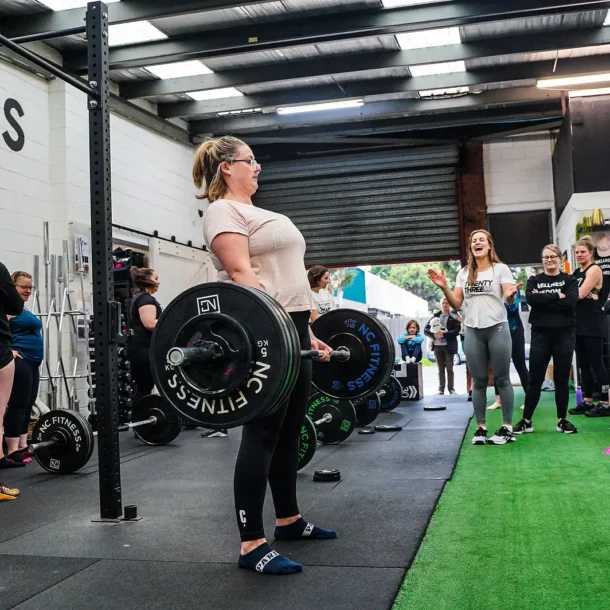Key Symptoms Explained
- Lower Belly Pooch: This is often due to a variety of factors including unresolved diastasis recti or poor deep core strength. Diastasis Recti is where the abdominal muscles have separated during pregnancy and not fully returned to normal.
- Upper Ab Gripping: This occurs when the upper abdominals overcompensate for weakness in the lower abdominals, leading to an imbalance.
- Back Pain and Rounded Shoulders: These are typically caused by poor posture and muscle imbalances as the body adjusts to motherhood and carrying a growing child.
- Pelvic Floor Concerns: These can range from weakness to tension, often exacerbated by improper core engagement or unresolved issues from childbirth.
5 Strategies to Resolve Postpartum Belly Pooch
Enhance Upper Back Mobility
- Many postpartum issues stem from poor posture and tightened upper back muscles. Incorporating daily exercises like thoracic spine rotations and stretches can improve mobility, decrease pain, and better support the upper body.
Learn Proper Abdominal Bracing
- Instead of “sucking in” the belly, which can lead to poor pressure management, learn to brace effectively. This involves gently drawing in the hip bones towards each other, activating the lower abdominals and supporting the spine and internal organs better.
Resolve Abdominal Imbalance
- Strengthen the transverse abdominis (TA) and internal obliques, which often remain weak postpartum, while ensuring that the rectus abdominis and external obliques do not overpower them. Targeted exercises, like pelvic tilts and deep abdominal contractions, can help balance these muscles.
Improve Alignment and Strengthen the Back and Shoulders
- Work on exercises that strengthen the back and shoulders to improve overall body alignment. Practices like yoga and Pilates can be particularly beneficial in building core stability and upper body strength, helping to alleviate rounded shoulders and back pain. A strength program that targets both the large and smaller muscles is also a great choice, such as what you can expect at our signature ‘Strong’ Program.
Revamp Breathing Mechanics
- Many new mothers tend to be belly breathers, which can stress the abdominal muscles. Learning to utilize thoracic (ribcage) breathing can relieve this stress. Exercises that promote rib mobility and encourage full, expansive breaths can significantly improve core function and the appearance of the belly.
The journey of motherhood is beautiful and challenging, and the physical remnants of childbirth can often linger longer than anticipated. By understanding the underlying causes of postpartum body changes and actively working to address them with targeted strategies, mothers can improve their physical health and overall well-being. Remember, every body is unique, so if you are not sure where to start, book in a Postpartum Assessment with the 23W team.








